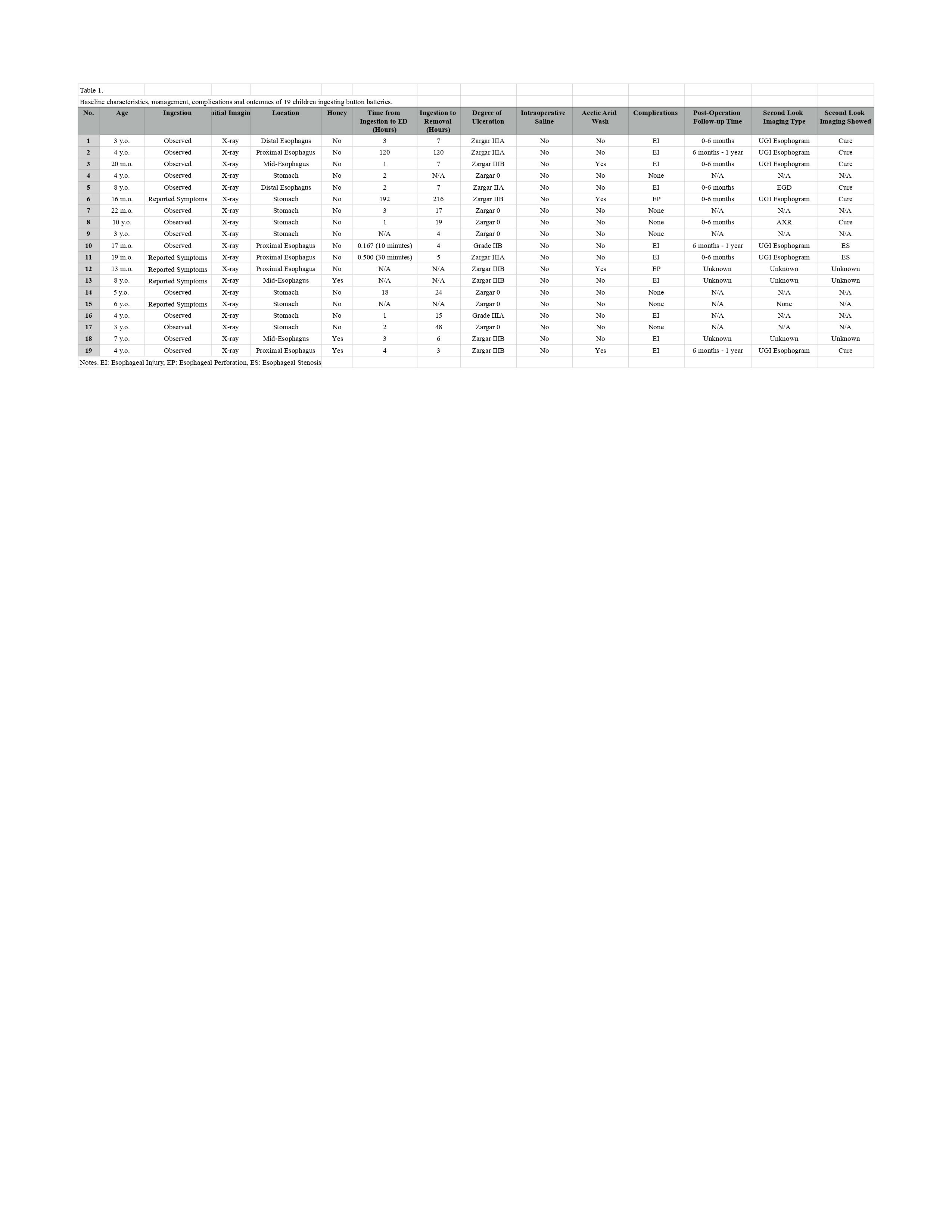Gastroenterology/Hepatology
Gastroenterology/Hepatology
55 - Acute Management and Outcomes for Children Hospitalized with Button Battery Ingestions
Publication Number: 55.215
.jpg)
Evangelos D. Katsanos, D.O. (he/him/his)
Pediatric Resident
Inova Children's Hospital
Arlington, Virginia, United States
Presenting Author(s)
Background:
Button batteries pose a clinical challenge, with complications such as esophageal perforation, tracheoesophageal fistula, aortoesophageal fistula, and death being reported in the literature. Thus for children ingesting button batteries, early diagnosis and effective management is crucial. This study aims to ascertain trends and patterns in the management and outcomes of children hospitalized with button battery ingestions at our local children's hospital.
Objective:
Different hospital systems have facility-specific protocols for button battery ingestion. Our study will describe the management of button battery ingestions at our institution to ascertain trends and variations in management and clinical outcomes.
Design/Methods:
A retrospective review of our electronic health record was conducted and identified patients admitted at our children's hospital with button battery ingestions from January 2018 to March 2022. Descriptive statistics were performed to describe the management and outcomes for children hospitalized with button battery ingestions. This study was exempted by the Institutional Review Board of INOVA Children's Hospital. Ingested button batteries are often lodged in the esophagus and can cause esophageal injury. Studies have shown that an esophageal battery's window of opportunity for injury-free removal is less than two hours. The retention time of all esophageal batteries in our cohort was greater than two hours, with all resulting in esophageal injury. This further supports the importance of minimizing retention time, early detection, prompt treatment, and effective management to improve clinical outcomes post-button battery ingestion. Strategies such as honey immediately post-ingestion and intraoperative acetic acid irrigations that may help prevent the propagation of tissue damage are new additions to management guidelines. With both interventions now included in our institution's protocol, we plan to investigate their effectiveness via a QI project further.
Results: Ingestion to removal ranged from three to 216 hours, with the majority removed within the first 24 hours (80%). Factors affecting delayed removal included transfer to a tertiary care center and unwitnessed ingestion. Fifty-three percent of button batteries were lodged in the esophagus, resulting in esophageal injury and two with esophageal stenosis. No tracheoesophageal fistulas, aortoesophageal fistulas, or deaths were reported. Of note, two of our severe cases were transferred to another children's hospital with pediatric thoracic surgeons.
Conclusion(s): 
